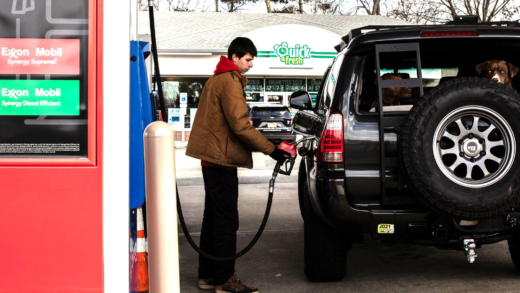Air cars, powered by compressed air technology, offer a cleaner alternative to traditional vehicles. They produce zero emissions and have a lower environmental impact compared to electric and gasoline cars. However, their travel range is currently limited to 100-200 miles. Companies like MDI and AirCar are innovating this technology, with expectations for availability in the near future.
What is an Air Car?
Air cars are innovative vehicles powered by compressed air technology. Unlike traditional gas guzzlers, these cars utilize air as a clean and renewable energy source. This approach significantly reduces emissions, making air cars an eco-friendly alternative. The concept isn’t new; it dates back to the 19th century, but recent advancements in technology are finally bringing air cars closer to reality.
The primary difference between air cars and conventional vehicles lies in their energy source. While gas-powered cars burn fuel to produce energy, air cars compress air in tanks, which then drives the engine. This process creates motion without the harmful byproducts associated with gasoline combustion. It’s like trading in your old clunker for a sleek, silent ride!
How Does Compressed Air Work in Cars?
Understanding how compressed air works in vehicles is simpler than it sounds. Think about blowing up a balloon. When you release it, the air rushes out, propelling the balloon forward. Similarly, air cars use compressed air to generate movement.
The air is stored in high-pressure tanks within the vehicle. When the driver accelerates, the compressed air is released through valves into the engine. This air expands rapidly, pushing pistons that turn the wheels. It’s a clean and efficient system that doesn’t rely on fossil fuels.
Additionally, air is abundant and can be compressed using renewable energy sources, making air cars a sustainable option for the future. This technology opens doors to a new era of transportation that could significantly cut down on pollution.
Key Components of an Air Car
Every air car consists of several essential components that work together to make it function. Here are the key parts:
- Air Tanks: These are high-pressure containers that store compressed air, essential for powering the vehicle.
- Air Engine: Instead of a traditional combustion engine, air cars use an engine that converts the energy from compressed air into mechanical energy.
- Valves and Regulators: These control the flow of air from the tanks to the engine, ensuring that the right amount of air is used efficiently.
- Chassis: The frame of the car, which houses all the components and provides structure and support.
- Wheels: Just like any car, air cars need wheels to move. These are designed to handle the unique dynamics of an air-powered vehicle.
Each of these components plays a critical role in the operation of an air car, making it a fascinating blend of engineering and environmental consciousness.
Storing and Utilizing Compressed Air
Storing and utilizing compressed air is crucial for air cars. These vehicles rely on high-pressure tanks to hold air, which is later released to drive the engine. The storage process is a bit like keeping soda in a can. Until you pop the tab, the fizz stays inside, waiting to unleash its power. Similarly, air is compressed into tanks, maintaining high pressure until needed.
Key components involved in this process include:
- High-Pressure Tanks: These tanks are specially designed to withstand extreme pressure, ensuring safety and efficiency.
- Valves: Valves control the flow of air, allowing for precise management of how much air enters the engine.
- Regulators: These devices help maintain consistent pressure, ensuring the engine receives the right amount of air at all times.
When the driver presses the accelerator, air escapes from the tanks through the valves, expanding rapidly. This expansion pushes pistons, creating motion. The efficiency of this system depends on how well the tanks and valves are designed. Innovations in materials and engineering can lead to even better performance.
Advantages of Air Cars Over Traditional Vehicles
Air cars boast several advantages compared to traditional vehicles. First and foremost, they offer a significant reduction in emissions. Since they run on compressed air, they don’t produce harmful exhaust gases, making them a cleaner choice for the environment.
Other benefits include:
- Cost Efficiency: Operating an air car can be cheaper than gas-powered vehicles, thanks to lower fuel costs.
- Maintenance: With fewer moving parts than combustion engines, air cars often require less maintenance.
- Quiet Operation: Air cars operate silently, providing a peaceful driving experience.
Moreover, as renewable energy sources are used to compress the air, the overall environmental impact can be greatly minimized. In a world increasingly focused on sustainability, air cars represent a promising step toward greener transportation.
Challenges Facing Air Cars
Despite their benefits, air cars face several challenges that need addressing before they can become mainstream. One of the primary issues is the limited travel range. Most air cars can only travel a fraction of the distance that gasoline vehicles can on a single tank of air.
Additional challenges include:
- Infrastructure: There’s a lack of refueling stations equipped to handle compressed air, making long-distance travel difficult.
- Storage Technology: Current air storage technology limits efficiency and capacity, necessitating further research and development.
- Public Perception: Many people remain skeptical about the reliability and safety of air cars, which can hinder adoption.
Addressing these issues will require innovation and investment. As companies continue to develop air car technology, overcoming these hurdles is essential for bringing this exciting concept to the masses.
Environmental Impact of Air Cars
Air cars represent a significant shift towards environmentally friendly transportation. Their reliance on compressed air instead of fossil fuels means they produce zero tailpipe emissions. This is a stark contrast to traditional gasoline cars, which release harmful pollutants into the atmosphere. When comparing their environmental footprint, air cars generally fare better than both electric and gasoline vehicles.
Electric cars, while cleaner than gasoline cars, still require electricity, which may come from non-renewable sources. Air cars, on the other hand, can utilize renewable energy for compressing air, making their operation more sustainable. Additionally, the manufacturing process for air cars tends to be less resource-intensive than that of electric vehicles, which often rely on rare minerals for batteries.
However, it’s essential to consider the entire lifecycle of air cars, including the production and disposal of components. If the manufacturing processes are not environmentally friendly, the overall benefits may diminish. Nonetheless, as technology advances, air cars have the potential to significantly reduce pollution and contribute to cleaner urban environments.
Travel Range of an Air Car
Travel range is a critical aspect of any vehicle, and air cars are no exception. Currently, most air cars can travel approximately 100 to 200 miles on a full tank of compressed air. This distance is significantly shorter than that of traditional gasoline vehicles, which can often exceed 400 miles on a single tank.
The limited travel range is mainly due to the efficiency of compressed air storage technology. High-pressure tanks can only hold so much air, and the amount of energy that can be extracted from compressed air is less than that from gasoline. Consequently, while air cars are excellent for short trips and urban commuting, they may not be ideal for long-distance travel.
Advancements in storage technology and engine efficiency are needed to extend the travel range of air cars. Companies are actively researching ways to improve the energy density of compressed air systems, which could lead to longer distances between refuels in the future.
Companies Innovating Air Car Technology
Several companies are at the forefront of developing air car technology. Notable players include:
- Motor Development International (MDI): A pioneer in air car technology, MDI has been testing various prototypes since the 1990s and aims to commercialize air-powered vehicles.
- AirCar: This company focuses on creating affordable air cars that utilize compressed air systems to reduce emissions and costs.
- Zero Pollution Motors: Based in the US, this company is working on air car prototypes that promise to revolutionize urban transport.
These innovators are not just focused on creating vehicles but are also addressing the infrastructure needed for air cars. This includes developing refueling stations that can handle compressed air efficiently, which is crucial for widespread adoption.
Future Availability of Air Cars
The future of air cars looks promising, with many experts predicting that they could hit the market within the next decade. As companies continue to refine their technologies and address the challenges faced by air cars, we may soon see them in showrooms.
Consumer interest in sustainable vehicles is rising, which puts pressure on manufacturers to innovate. With increasing investments in research and development, the timeline for air car availability is becoming clearer. However, widespread adoption will depend on overcoming current limitations, such as travel range and infrastructure.
Overall, as the automotive industry shifts toward greener solutions, air cars are positioned to become a viable alternative, potentially revolutionizing how we think about transportation.





Comments are closed.